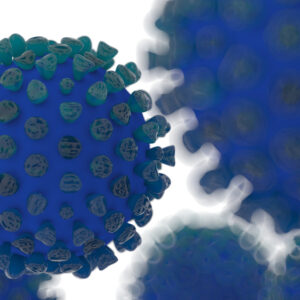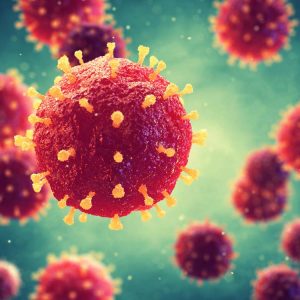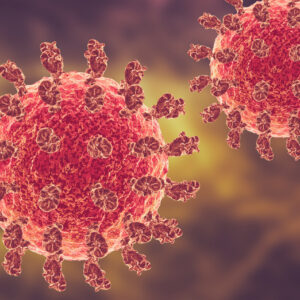Nipah Virus
Nipah virus (NiV) is a zoonotic virus (transmitted from animals to humans) and can be further transmitted through contaminated food or directly between people. In infected people, it causes a range of illnesses from asymptomatic (subclinical) infection to acute respiratory illness and fatal encephalitis. The virus can also cause severe disease in animals such as pigs, resulting in significant economic losses for farmers. Although Nipah virus has caused only a few known outbreaks in Asia, it infects a wide range of animals and causes severe disease and death in humans, making it a public health concern.
We offer recombinant Nipah virus proteins in support of vaccine R&D and as targets for serological immunoassays.
Nipah Virus Background
Nipah virus (NiV) is an enveloped, single-stranded negative-sense RNA virus that belongs to the Henipavirus genus – a new member of the Paramyxoviridae family. Nipah infection was first recognised in Malaysia 1998/1999, where a major NiV outbreak occurred in pigs and humans. A subsequent outbreak of NiV in Singapore also pointed to pigs as an intermediate host. However, other outbreaks in India and Bangladesh did not. The natural host for NiV has now been identified as the fruit bat, of the Pteropus genus, with swine acting as intermediate host in some cases. Reports suggest that transmission of Nipah virus to humans can occur through contact with NiV infected bats, food contaminated by bat’s excrement, infected pigs and other NiV infected humans. Two different clades of NiV have been identified to date (I and II), suggesting different routes of transmission. NiV infection has also been reported in other animals such as dogs, cats, horses and goats but these are thought to be dead-end hosts (CDC).
Nipah, the disease caused by NiV infection is now endemic in South Asia and several outbreaks of NiV infection have been reported in India and Bangladesh. Nipah is a zoonotic disease with high rates of morbidity and mortality in infected animals and humans. The symptoms of Nipah virus infection in humans can include rapidly developing fever, abdominal pain, nausea, vomiting, acute respiratory syndrome and severe encephalitis, which is fatal in a high percentage of cases (WHO).
In 2015, the World Health Organization highlighted NiV infection as an emerging disease, requiring accelerated R&D to advance in vitro diagnostic development, vaccine design and therapeutics (WHO, 2015).
References
- Centers for Disease Control and Prevention: Nipah Virus (NiV)
- World Health Organization: Nipah Virus (NiV) infection
- World Health Organization: WHO publishes list of top emerging diseases likely to cause major epidemics
Nipah Antigens
Our proprietary mammalian cell expression system is used to prepare recombinant Nipah virus glycoprotein F and glycoprotein G, suitable for use in assay development, vaccine research and as antigens for the preparation of nipah-specific antibodies. These proteins are presented as Fc-fusion proteins, with an option of either human or mouse Fc regions to maximise flexibility.
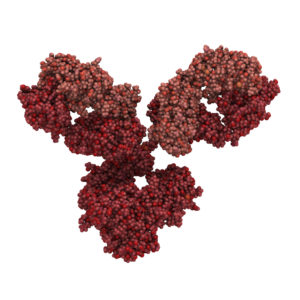
Mouse Anti-Nipah Virus Glycoprotein F Antibody (CG11)
Price range: $454.04 through $1,139.31 excl. VAT
Mouse Anti-Nipah Virus Glycoprotein G Antibody (AE6)
Price range: $454.04 through $1,139.31 excl. VAT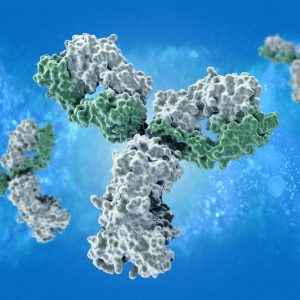
Mouse Anti-Nipah Virus Glycoprotein G Antibody (CF12)
Price range: $454.04 through $1,139.31 excl. VAT
Nipah Antibodies
The Native Antigen Company provides a range of monoclonal mouse antibodies against Nipah virus Glycoproteins F and G. These antibodies are suitable for the development of vaccines, therapeutics and immunoassays, showing minimal cross-reactivity with other serotypes.
Questions?
Check out our FAQ section for answers to the most frequently asked questions about our website and company.


![Influenza A [A/Hong Kong/45/2019 (H3N2)]](https://thenativeantigencompany.com/wp-content/uploads/2018/05/Misc-Virus-122-300x300.jpg)
